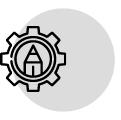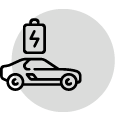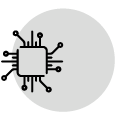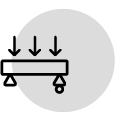Research,
design,
and excellence.
This is the aim behind the development of Satiz TPM’s specific knowhow in the field of automotive design, especially oriented towards electric propulsion through the study and identification of new services that can guarantee both energy efficiency and progress, in line with the continuing technology changes linked to this dynamic market.
SKILLS
OUR TEAM
A team of over seventy technical designers, with the seniority and knowhow needed to manage and supervise every stage in the development of a vehicle, from feasibility through to production, promptly reacting to the needs of our clients.
ENGINEERING
DEVELOPMENT
We design parts up to complete vehicle, with a team of specialists in all vehicle areas, excepting the powertrain.
We manage complex projects with PLM instruments, essential tools when it comes to guaranteeing shared information, an efficient design and working process, and team work. With these instruments we can support our customers from style feasibility processes to Start Of Production (SOP).
Our expertise is constantly updated when it comes to technological solutions and the use of materials, so that we can guarantee innovation and cutting-edge tech solutions to our projects.
From feasibility to SOP
- Feasibility and vehicle set-up
- Homologation checks
- Full BIW development
- Body parts.
- Closure.
- Flush and Gaps definition.
- Assembly and maintenance diagrams.
- Exterior and Interior Trim
- Feasibility and setting.
- Studies of standard compliance.
- System installation and integration.
- Modelling and documents.
- Production Support
- Debugging.
- Editing post verifica calcolistica.
- BOM and documentation
Continuous research into innovative materials
Composite
Aluminium
High Strength Steels
Resins
Eco-compatible materials
ELECTRIC
VEHICLE
DESIGN
The car’s present
is electric.
Experience in the design of complete “full electric” vehicles has made Satiz TPM one of the few design house able to support and advise its customers in the difficult setup choices that need to be made during the development of an electric vehicle.
From the body to the suspension, the floor and the bodywork, the battery and the driver controls, we “think” electric vehicles before and during the design process.
ELECTRICAL
AND ELECTRONIC
DESIGN
When it comes to the development of a next-generation vehicle, innovation is represented by integration and by the increasingly bolder use of electronic control, driver support and infotainment systems. Our team of hardware and software specialists work to develop control systems for the different functions of the vehicle, to allow the correct dialogue between control units and on-board electronics. We also design and develop all of the wiring components for the vehicle.
From architecture through to diagnostics
System architecture
Power management
Sub-system integration
Signal and power wiring
Cost-performance analysis
Testing and validation
Diagnostics and Statistics
ERGONOMICS
Habitability, accessibility,
visibility, controls usability,
pleasantness, comfort.
Modern vehicles need compliance with precise standards to protect safe and ergonomic use. Ergonomic simulations and calculations carried out from the very first stages of the project allow us to harmonise people’s needs with those of the mechanical means that they are using. This guarantees linear development through to the next stages of the project, compliance with approval constraints, and the quality and safety perceived for the finished product: i.e., safety, time savings and development costs.
STRUCTURAL
VALIDATION
Efficiency,
safety and cost-effectiveness
in one only team.
During the vehicle’s engineering development process, it is constantly necessary to check the impact of design choices on the finished product in terms of structural resistance, safety, noise levels, aerodynamic efficiency and vehicle handling.
Continued checks allow for progressive assessments of the work done and at the same time, they highlight critical points that need to be addressed and dealt with in order to achieve a product that can be put into production and approved.





